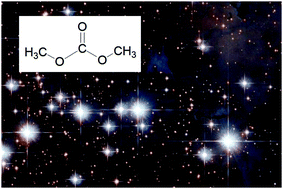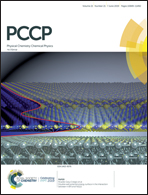Infrared intensities and molar refraction of amorphous dimethyl carbonate – comparisons to four interstellar molecules
Abstract
The first measurements of infrared (IR) band intensities of solid dimethyl carbonate are presented along with measurements of this compound's refractive index and density near 15 K, neither of which has been reported. Molar refractions are used to compare these results to other new data from ices made of methyl acetate, acetone, acetic acid, and acetaldehyde, four molecules known to exist in the interstellar medium. Comparisons are made to IR intensities taken from the literature on amorphous ices. The value and importance of comparisons based on molecular structures, to predict and test laboratory results, are highlighted.



 Please wait while we load your content...
Please wait while we load your content...